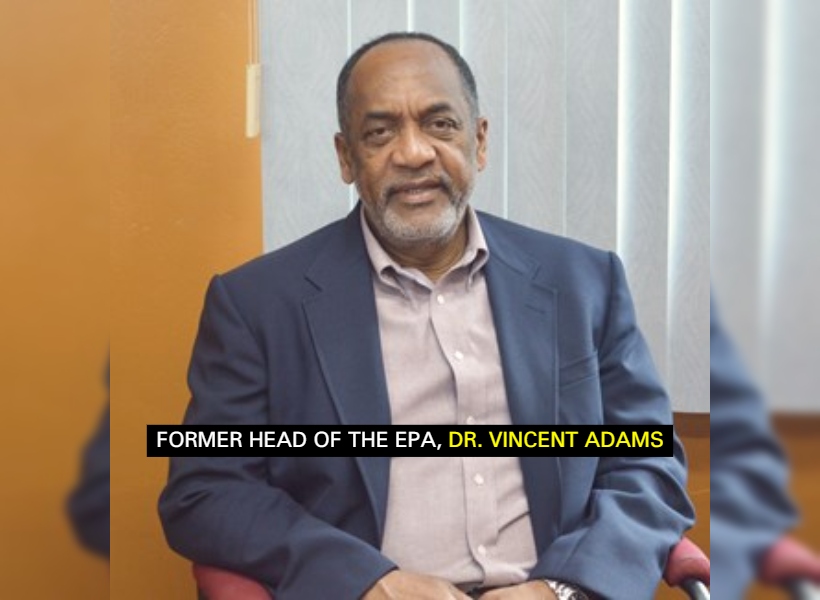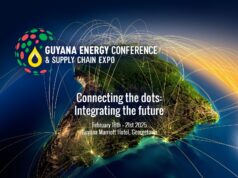While the PPP/C Government has said it will ensure ExxonMobil is held accountable for how it conducts its operations, former Head of the Environmental Protection Agency (EPA), Dr. Vincent Adams said he is forced to believe otherwise since the administration allowed the oil giant to “illegally” flare 14 billion cubic feet of gas without consequence.
Instead, Dr. Adams said the PPP/C has applied a US$30 penalty on every tonne of Carbon Dioxide equivalent (CO2e) ExxonMobil flares after May 13, 2021. If the government was serious about ensuring the oil giant is held accountable for its actions, Dr. Adams said it would have applied the penalty to what was already flared.
He also noted that the government, perhaps unwittingly, has said that this penalty is being applied in keeping with the Polluter Pays Principle. The former EPA Head noted however that this is not how the principle was intended to be applied.
Dr. Adams said, “…they have it totally wrong. I can’t believe they think this principle is that you can flare for any period and just pay a fine. If that were the case then you don’t need an EPA. This principle’s intention is for those who pollute you have to compensate. If was never paid as part of a plan to pollute. I think this is a lack of knowledge because I don’t think anyone would do this.”
In addition to the explanation provided by Dr. Adams, research by Guyana Standard indicates that the Polluter Pays Principle was adopted by the Organisation for Economic Co-operation and Development (OECD) in 1972 as an economic principle for allocating the costs of pollution control.
Under the 1972 and 1974 OECD Recommendations(1)(2), the Polluter Pays Principle means the polluter should bear the “costs of pollution prevention and control measures”, the latter being “measures decided by public authorities to ensure that the environment is in an acceptable state”.
In other words, the polluter has to bear the cost of steps that he is legally bound to take to protect the environment, such as measures to reduce the pollutant emissions at source and measures to avoid pollution by collective treatment of effluent from a polluting installation and other sources of pollution.
Extensive research also shows that gas flaring which has been ongoing offshore Guyana since 2019 contributes to climate change, has serious environmental implications. The Department of Mechanical Engineering at the University of Ibadan, Ibadan, Nigeria, was keen to note in one of its studies that gas flaring releases carbon dioxide and methane, the two major greenhouse gases that accelerate climate change. Of these two, methane is more harmful than carbon dioxide.
The Department of Mechanical Engineering has also noted that flaring contributes to local and regional environmental problems, such as acid rain with attendant impact on agriculture, forests, and other physical infrastructure. The acid rain results in environmental degradation, which includes soil and water contamination, and roof erosion.
Furthermore, there have been over 250 identified toxins released from flaring including carcinogens such as benzopyrene, benzene, carbon disulphide (CS2), carbonyl sulphide (COS) and toluene; metals such as mercury, arsenic and chromium; sour gas with Hydrogen Sulfide (H2S) and Sulfur Dioxide (SO2); Nitrogen oxides (NOx); Carbon dioxide (CO2); and methane (CH4) which contributes to the greenhouse gases.
It is crucial to note that ExxonMobil’s Environmental Impact Assessments (EIA) for its Liza Phase One, Two and Payara projects, make no mention of the types of toxic gases that would be released via flaring alongside their potential impact on the environment in various scenarios.












Where did Dr. Vincent Adams get his degree? How much did he pay for it?
Wasn’t he one in the racist PNC regime?